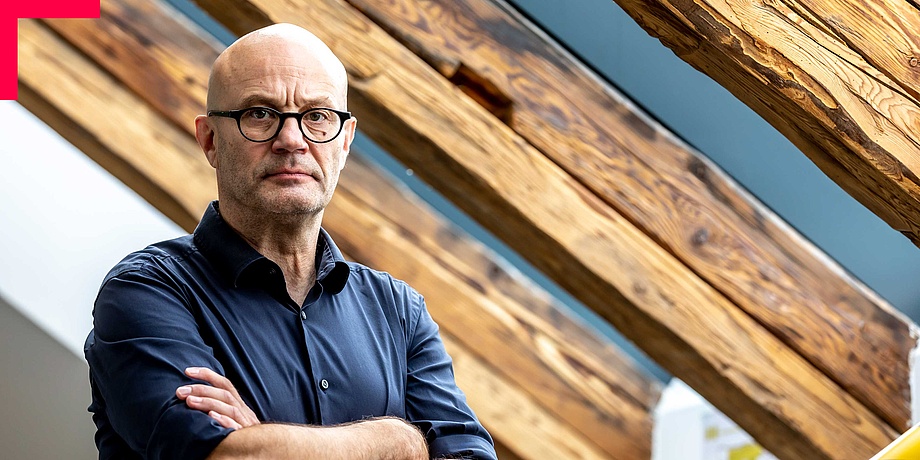50 centimetres. That's how much – or as little, depending on your point of view – a spruce grows roughly per year. Spruce and other trees, on the other hand, set a completely different pace when they are used in house building. "One of the great advantages of timber construction is that the construction time is short compared to other construction methods. This is due to the high proportion of prefabrication," says Tom Kaden. He is Austria's first professor of architecture and timber construction at the TU Graz. The potential of wood is increasingly being recognized by awarding authorities.
"The classic prejudices – such as that modern wooden constructions are highly flammable or hot in summer and cold in winter – have long been refuted by technical arguments. And climate protection and thus energy-efficient building with a natural, renewable raw material are also playing an increasingly important role."
Timber construction needs more planning
The endowed professorship at Graz University of Technology, which was started in 2017, is a response to the timber construction boom. Because "there is still a lack of well-trained timber construction architects on the market," says the Berliner, who has been working exclusively with timber construction for more than 20 years. The students' interest in timber construction was already big when the chair was launched. And that has not changed.
"In the meantime, we already have the first graduates working in renowned timber construction offices both in Graz and internationally," says Kaden with satisfaction.
The practical relevance in the programme is of particular importance to him. "We regularly visit contractors and look at construction sites. In timber construction there is an immensely high degree of prefabrication. Entire elements are prefabricated in contracted carpentry shops and then assembled on the construction sites. Therefore, the depth of planning is much higher than with other building materials. And it is therefore essential that there is an early common planning level between all those involved in architecture, specialist planning and construction," says Kaden. Interdisciplinary cooperation is imperative. "And the students naturally also need an awareness of the cost relevance of various types of construction. Since last semester, we’ve integrated this topic even more strongly into the curriculum."
Don’t compare apples with pears
Cost is a crucial issue in the construction industry, especially true-cost economics. According to Kaden, calculations here are often simply not correct or the pure construction costs are only considered in isolation.
"I have to look at both energy consumption and costs over the entire life cycle."
"If I only look at the construction site, it's like comparing apples and pears. Only if I include the entire value chain and even think about the end of life of the buildings is this a conclusive comparison. At the moment we’re unfortunately still using excessive quantities of foamed fuel oil on our façades. I also have to think about the disposal costs of this hazardous waste and take it into account when comparing life cycle costs," Kaden sums up.
"The calculation is not so simple, because we have to look much further ahead." The timber construction expert also sees potential in the legal framework. "The technological possibilities of modern timber construction are by far not yet reflected in the legal text. There have already been initial adjustments, but there is still a lot of room for improvement."
Timber construction is growing in the cities
There is also much potential in the density of timber construction projects. Although timber construction has been booming in recent years and multi-storey wooden houses are being built in more and more towns and cities, the overall view relativizes the boom again. “Considering all the building activities, timber construction still accounts for a very small percentage. We don’t only need lighthouse projects but also repeat orders."
Graz is a good role model here, pioneer projects are increasingly being imitated.
With the QUARTER SIEBEN the housing group ENNSTAL has again implemented a multi-storey timber construction. There are also two "wooden hospitals" in Graz on the grounds of the state hospital LKH Graz Süd-West.
Not least because of the positive effect of wood on the psyche of humans as the medical director Michael Lehofer stresses: "The building material wood is meant to support the special therapeutic atmosphere and recovery during the hospital stays and beyond. Often the therapy is in the foreground and the context is given less attention. Here we try to consider both and the wooden pavilion is a nice sign of that."

Researchers at TU Graz are looking for solutions to the burning problems of the present. What topics are currently on their radars and what you can study to change the future, you can find out on TU Graz screenshots.
